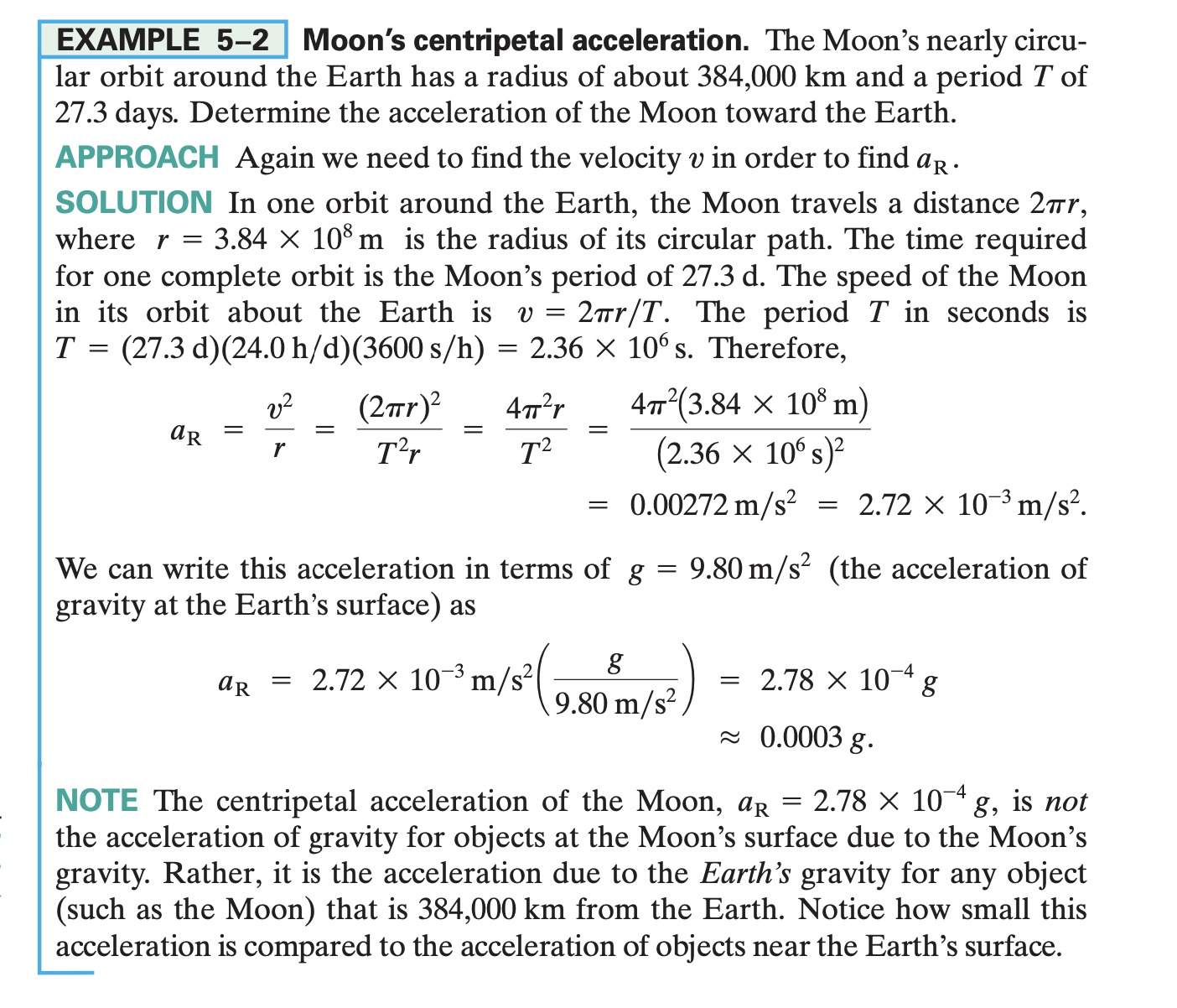Home /
Expert Answers /
Physics /
how-did-v-2-r-become-4pi-2r-t-2-example-5-2-moon-39-s-centripetal-acceleration-the-moon-39-s-nearly--pa508
(Solved): How did v^2/r become 4pi^2r/T^2 ? EXAMPLE 5-2 Moon's centripetal acceleration. The Moon's nearly cir ...

How did v^2/r become 4pi^2r/T^2 ?
EXAMPLE 5-2 Moon's centripetal acceleration. The Moon's nearly circular orbit around the Earth has a radius of about and a period of 27.3 days. Determine the acceleration of the Moon toward the Earth. APPROACH Again we need to find the velocity in order to find . SOLUTION In one orbit around the Earth, the Moon travels a distance , where is the radius of its circular path. The time required for one complete orbit is the Moon's period of . The speed of the Moon in its orbit about the Earth is . The period in seconds is . Therefore, We can write this acceleration in terms of (the acceleration of gravity at the Earth's surface) as NOTE The centripetal acceleration of the Moon, , is not the acceleration of gravity for objects at the Moon's surface due to the Moon's gravity. Rather, it is the acceleration due to the Earth's gravity for any object (such as the Moon) that is from the Earth. Notice how small this acceleration is compared to the acceleration of objects near the Earth's surface.
Expert Answer
Since moon is moving on a circular path of of radus and it has time period of . So the speed of...